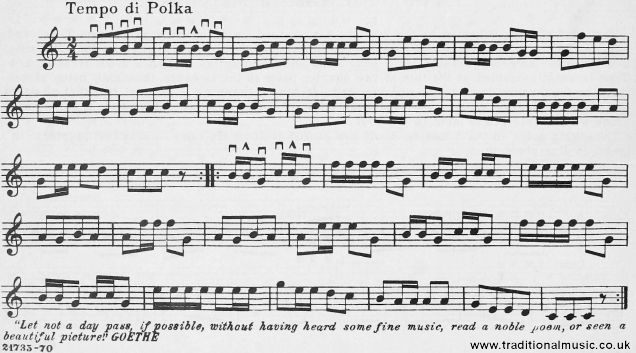Mandolin Self Instructor, online tutorial - Page 24
A simplified self learning system for the Mandolin with tuning instruction, song folio, chord diagrams, sheet music and PDF for printing. By ZARH MYRON BICKFORD
| Share page | Visit Us On FB |
|
Sixteenth Notes |
||
|
Sixteenth notes have exactly half the time value of eighths,hence are played exactly twice as fast. This means that they must be played with alternating down and up strokes, like eighth notes in 4/4 Time. It will be of assistance at the beginning to count four to each measure in 2/i Time when the measures contain sixteenth notes, as they frequently do. This gives each eighth note one beat, the sixteenths being counted one-and, etc. The use of the eighth and quar- ter rests is necessary in the last measure of the following Study, in order to complete the meas- ure, since the note has but one beat. |
||
 |
||
|
Bingo !
The Tempo di Polka at the beginning means "in the time or style of a Polka'/ this being a live- ly Dance, always in 2/4 Time. The two dots placed just before the double bar at the end of the sixteenth measure are called "repeat dots" and indicate that the Strain (sixteen measures> is to be repeated. The dots occur again at the end of the piece, causing the last sixteen measures to be repeated. |
||
 |
||